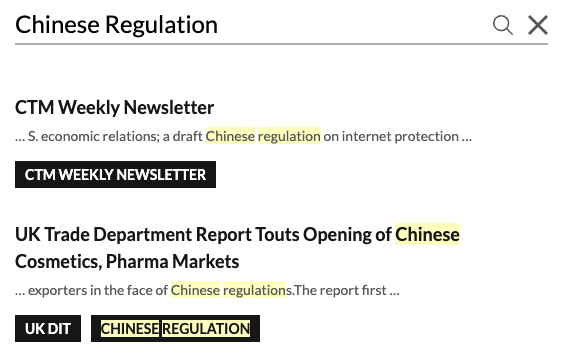At the August 30 DSB meeting, a WTO panel was established to hear China's request that it be found in compliance in a dispute brought by the United States against the administration of tariff-rate quotes for wheat, rice, and corn. (See our earlier posts here and here). But the next steps in the dispute are unclear, as illustrated by developments in a parallel case brought by the United States against certain Chinese agricultural subsidies.
The China - Domestic Support for Agricultural Producers (DS511) and China - Tariff Rate Quotas for Certain Agricultural Products (DS517) disputes have been on somewhat similar timelines. The DS511 panel was requested in December of 2016; the panel report was circulated in February of 2019; and the panel report was adopted (without appeal) in April of 2019. The DS517 panel was requested in August of 2017; the panel report was circulated in April of 2019; and the panel report was adopted (without appeal) in May of 2019. Both cases related to measures in China's agricultural sector.
The implementation and compliance stages have been similar so far as well. In both cases, the United States indicated that it did not believe China had come into compliance, and therefore it would suspend concessions pursuant to DSU Article 22.2 (DS511, DS517). In both cases, China objected to the U.S. proposed suspension, and each matter was referred to arbitration under DSU Article 22.6. And in both cases, the United States did not request a DSU Article 21.5 compliance panel to determine if China had come into compliance, so China requested an Article 21.5 panel of its own in order to get a declaration that it was in compliance and prevent the United States from suspending concessions.
The DS511 dispute is a little further along in terms of the timeframe, so it may offer some lessons for what might happen in DS517. So far, the answer to what has happened in DS511 is: Nothing. The issue of the U.S. proposed suspension of concessions was referred to arbitration in July of 2020, but the arbitrator has not been constituted yet. And the Article 21.5 panel was established in September of 2020, but has not been composed yet. At this moment, it does not seem like either proceeding is going forward.
With regard to DS517, at the August 30 DSB meeting, the United States noted that it had "paused" the DS517 arbitration. It may be that the United States is seeking to pressure China to comply in these disputes without engaging in full-fledged litigation. By taking the steps required to resort to litigation if necessary, the United States may simply be sending a signal that it is watching China's actions carefully. However, the U.S. approach to the next steps in the composition of the Article 21.5 panel in DS517 remains unclear, and USTR did not respond to an inquiry on this point.
It is also worth noting that the U.S.-China Phase One deal addresses the issues covered by DS517. (Annex 14, para. 1 states: "China shall ensure that, from December 31, 2019, its TRQ measures for wheat, rice, and corn are in conformity with the Panel Report in China-Tariff Rate Quotas for Certain Agricultural Products and the WTO agreements, including China’s commitments under the Protocol on the Accession of the People’s Republic of China to the WTO and China’s Schedule CLII, Part I, Section 1(B).") The Phase One deal does not have a traditional state-state dispute settlement mechanism though. It is possible that USTR could raise these issues bilaterally with China under the Phase One deal, but to date there has not been any public information about enforcement actions under the deal.

